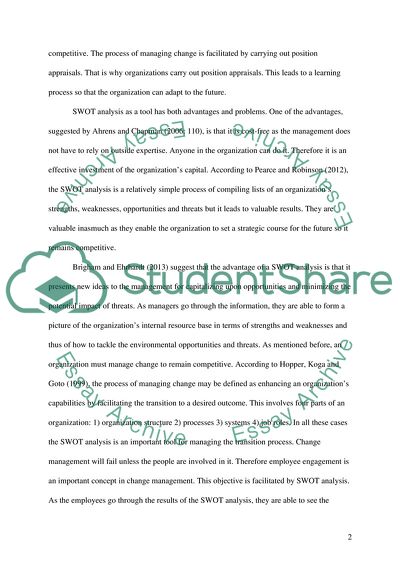Cite this document
(Critically evaluate the usefulness of SWOT analysis as a tool for Essay, n.d.)
Critically evaluate the usefulness of SWOT analysis as a tool for Essay. https://studentshare.org/finance-accounting/1824155-critically-evaluate-the-usefulness-of-swot-analysis-as-a-tool-for-carrying-out-organizational-position-appraisals-and-how-the-modern-day-management-accountant-can-contribute-to-this-strategic-process
Critically evaluate the usefulness of SWOT analysis as a tool for Essay. https://studentshare.org/finance-accounting/1824155-critically-evaluate-the-usefulness-of-swot-analysis-as-a-tool-for-carrying-out-organizational-position-appraisals-and-how-the-modern-day-management-accountant-can-contribute-to-this-strategic-process
(Critically Evaluate the Usefulness of SWOT Analysis As a Tool for Essay)
Critically Evaluate the Usefulness of SWOT Analysis As a Tool for Essay. https://studentshare.org/finance-accounting/1824155-critically-evaluate-the-usefulness-of-swot-analysis-as-a-tool-for-carrying-out-organizational-position-appraisals-and-how-the-modern-day-management-accountant-can-contribute-to-this-strategic-process.
Critically Evaluate the Usefulness of SWOT Analysis As a Tool for Essay. https://studentshare.org/finance-accounting/1824155-critically-evaluate-the-usefulness-of-swot-analysis-as-a-tool-for-carrying-out-organizational-position-appraisals-and-how-the-modern-day-management-accountant-can-contribute-to-this-strategic-process.
“Critically Evaluate the Usefulness of SWOT Analysis As a Tool for Essay”. https://studentshare.org/finance-accounting/1824155-critically-evaluate-the-usefulness-of-swot-analysis-as-a-tool-for-carrying-out-organizational-position-appraisals-and-how-the-modern-day-management-accountant-can-contribute-to-this-strategic-process.


